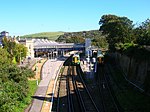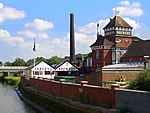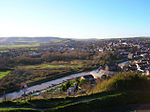Lewes Friends Meeting House

Lewes Friends Meeting House is a Religious Society of Friends (Quaker) place of worship in the town of Lewes, part of the district of the same name in East Sussex, England. A Quaker community became established in the town in 1655 when George Fox, prominent Dissenter and founder of the Religious Society of Friends, first visited. A meeting house opened in 1675 and a burial ground was erected in 1697. The present meeting house, which is a Grade II listed building, was built in 1784 on the site of the burial ground. The building has undergone "a long and complex history of extensions" and rounds of alterations, including the addition of two cottages and a coach-house (since demolished). It is one of a wide range of Protestant Nonconformist places of worship in the town, many of which have been established for centuries.
Excerpt from the Wikipedia article Lewes Friends Meeting House (License: CC BY-SA 3.0, Authors, Images).Lewes Friends Meeting House
Friars Walk,
Geographical coordinates (GPS) Address Nearby Places Show on map
Geographical coordinates (GPS)
| Latitude | Longitude |
|---|---|
| N 50.8726 ° | E 0.0139 ° |
Address
Religious Society of Friends
Friars Walk 32
BN7 2LF , Southover
England, United Kingdom
Open on Google Maps










